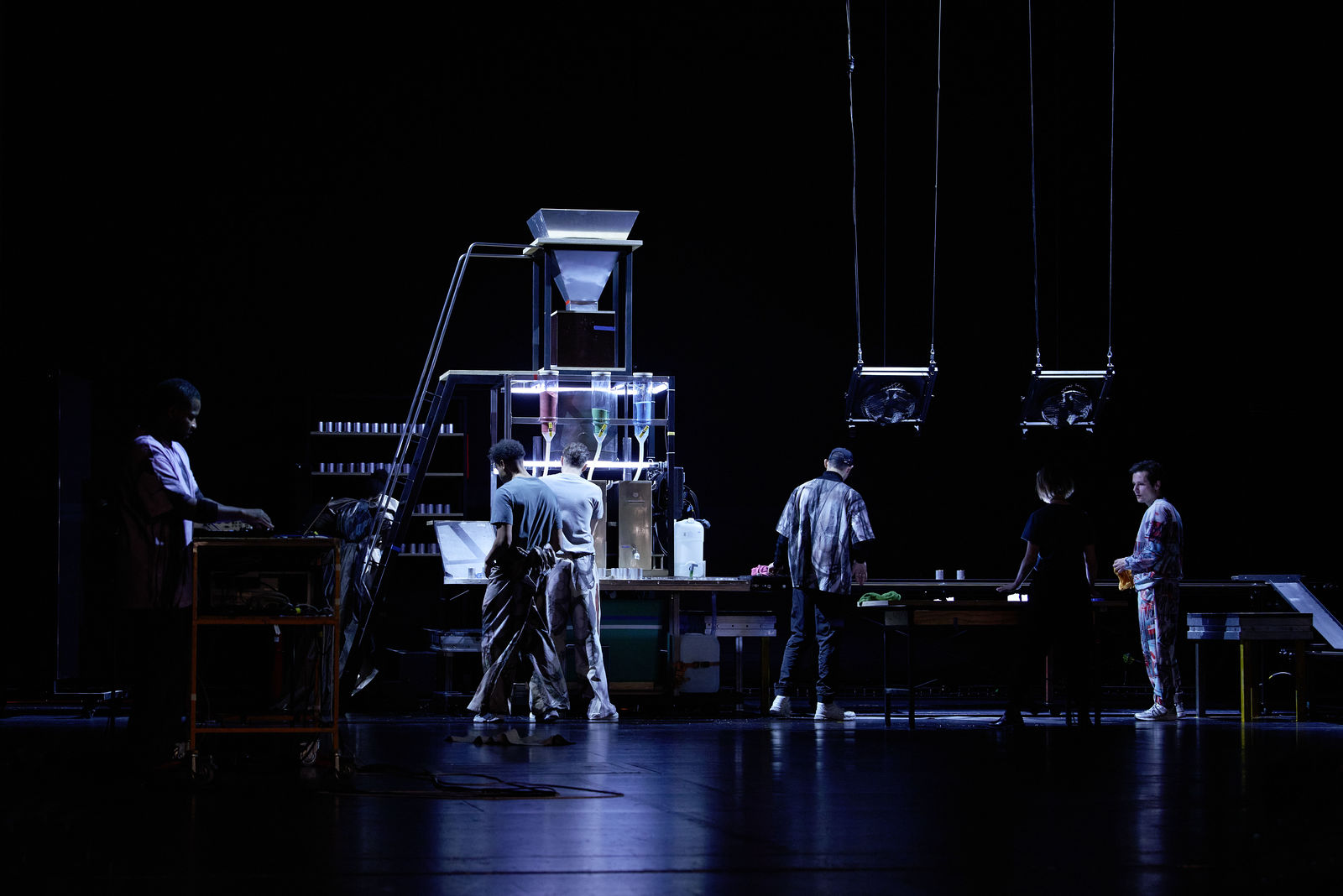The Ring Orchestra:
Eight Statements
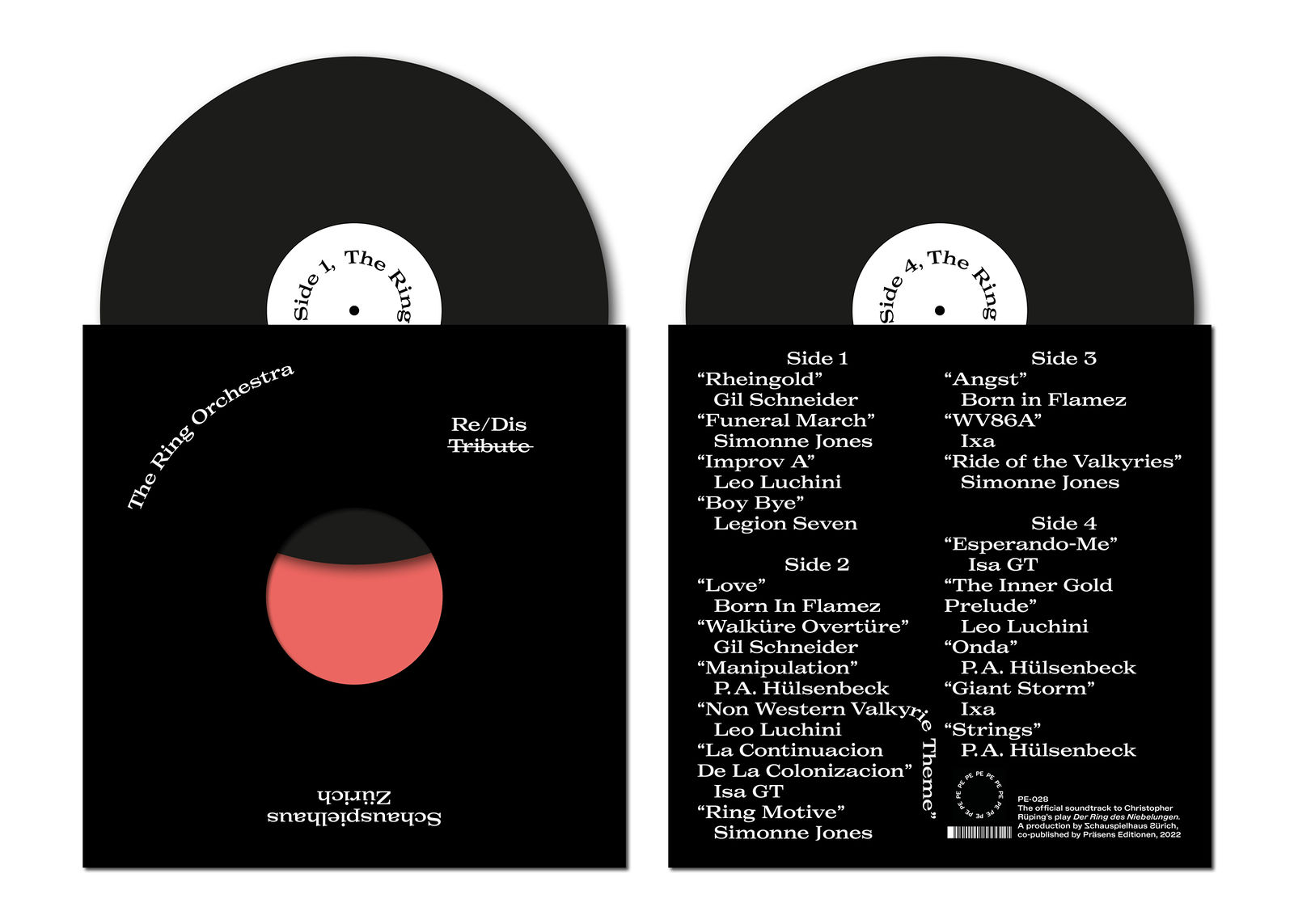
When Black Cracker was asked if he wanted to take on the responsibility for the music in the new Ring des Nibelungen together with Jonas Holle, he quickly said that he wanted to spread this task between more people. Eight musicians answered his call and joined the process: The Ring Orchestra. Black Cracker creates their music live on stage every night.
The eight orchestra musicians have each written a statement about the project and their work on it. Some write about individual pieces of music that they wrote as a reaction to Wagner or consciously detached from him, others describe the process of writing itself or how the confrontation with Wagner took shape. Or something completely different. Read the eight statements of The Ring Orchestra here and listen to the corresponding compositions!
published on 24. March 2022
Born In Flamez
So, Wagner, huh? Wow that's not banal. You want to “fix it”? I don't know if that’s possible. We all know he was a racist, and anti-Semite and a chauvinist galore – which cannot be ignored. You might make a post-structuralist argument and mention the death of the author and how it must be differentiated from the work. But this work, this “Ring”, is an exemplary showcase of all of the above. It shows how deeply enamored Wagner was with fascist ideas, with white supremacist fantasies, with the idea of a superior race, and his despise of disabled bodies.
So his work has to be torn apart or we can wait until it sinks into the shadows of gen 1 history. Until then - can we stop praising his genius? Let’s deconstruct it! Let’s stick to the facts that he stole ideas from Mendelssohn Bartholdy, and bent old folklore, and was maybe just a clever imposter after all?
If we are to deconstruct the work of a narcissist, it has to be done collectively.
We have to decentralize the Ego. There is no genius but the thoughts we exchange, the ideas which grow in conversation. There is no oeuvre without inspiration. No genius without those who help them to fame.
So before this orchestra started working on the individual pieces that ended up in this composition, we had a conversation. In fact, it was an 8-hour long discussion about how it was possible to look at the work without affirming its author. The different ideas that came together and in the end shape this work came from many different angles.
Mine was this: If the Ring played with emotions – trying so obviously to stir them – making us feel for and with the hero, so would I. But subtly and from the shadows. Queering them. Telling the stories of the in-between-creatures lurking in the unspoken parts of the tales. The transitions and transformations. There’s the Dragon, who used to be a giant;, why does nobody ever tell the story of their transformation? Wasn’t it beautiful to become a dragon? What did they feel when they transitioned? Did they feel “Love” for themselves? Did they feel seen? My song Love eludes to that self – to the self-love and empowerment the Dragon must have felt after becoming this beautiful creature. Only to be cowardly slain by a white cis-man who creeps into his hiding place – colonizing the space with his hetero agenda. Only to bathe himself in the dragon’s blood after. Isn’t that an act of queering? Does Siegfried want to transition as well? Is he silently yearning for the glory of a new body? And doesn’t the dragon’s blood make him invulnerable?
So is the slaying of the Dragon an act of internalized transphobia? This is what my song Angst is about. The fear of the dragon when the cis-“hero” enters the cave but also the fear of the cis-man of his desire to be like the dragon. My story of the “Ring” is that of a glorious transition and our internalized fears. Let’s deconstruct them. Together.
Gil Schneider
I was initially excited about this project for the number of ways it connects to my general practice and beliefs. Firstly, I have a lot of admiration for some of Wagner’s music, particularly the orchestral parts such as overtures and preludes. I enjoy the orchestration and development of motifs, but particularly the unrestrained drama and cheesiness that I definitely connect to. Being Jewish/Israeli I was always aware of Wagner’s anti-Semitism and of the discourse around whether it was ok to play his music. My stance towards this was always one of ambivalence - which in my opinion is more productive than the settling of the question on one or the other side. Meaning that I wouldn’t recommend Wagner’s music to anyone without making them aware of his politics, just as I wouldn’t want to collaborate with or even support a living artist whose politics I despise. But especially in cases where the author is literally dead, I do not have a problem with engaging with their art on my terms. I see this ambivalence as a space of continuous navigation, which brings me to this collaborative project specifically.
One way of dealing with this heritage could be a demystification of the artwork. Instead of following the historical and patriarchal understanding of the artist as a genius and sole creator without context, we treated Wagner’s art as a common good. A thing created in a context and part of a lineage, which we can detangle, unroot and repurpose. One aspect of that, and one that is an integral part of my overall practice, is the art of sampling. To me sampling respectfully treats art as flexible, living material. It allows one to reconnect and re-contextualize endlessly, making it personal without a claim of ownership. A second aspect is the fact that this score was made as a collaboration. It inherently questions a patriarchal understanding of authorship and single meaning. It opens a space of creation that is antithetical to Wagner’s ethos, profaning his legacy with the best intentions.
Isa GT
Perpetual hegemony, the same one-sided story told over and over again. As always, a storychanges depending on who tells it. Re-distributing, re-telling, modifying, morphing, nothing ever stops changing, even if the changes are microscopic. Turning to see the other hemisphere, to really listen to that overlooked part, tuning in.
Some tales are as old as time. Different civilisations, tribes or groups adapt them according to their own world view, but when we look in depth, the themes seem similar.
Embarking upon this project, I could not help but struggle under the historical weight of the original piece and with some of the abominable associations this piece has had. For me it is not possible to separate the author from the creation, and in this case, I felt that very acutely.
I had to tune out to be able to tune in. To be able to create.
When working on the two pieces for this project I opted to focus on Colonisation and the idea of finally arriving to a “promised land/state of mind”.
On Continuación de la Colonización, I started creating from within a place of turmoil, observing what was happening in my country of origin, my hometown, feeling that the cycle is endless and that I am impotent to stop it. Thoughts took shape quickly, and words started pouring out of me. I had to let them out and give them a vehicle to hopefully reach receptive ears and minds.
On the piece Esperando-Me, I examine the idea of decolonisation of one’s Self. It portrays the struggle to transcend the canons imposed by others and to look into our unique and particular legacy in an attempt to accept ourselves and flourish. To be jubilant, to arrive at that place, where I am, waiting.
To be part of an orchestra “of sorts” has been a wonderful experience. Getting to exchange and participate with likeminded artists, talking and debating ideas with each other has been a pleasure, all in an environment of respect for each other and the process, and I am in awe of the result.
Ixa Psyborg
I produced most of my contributions to the soundtrack by way of sound collaging, using several royalty free samples and my own instruments to create aural interpretations of certain settings. My goal was to represent the sonic experience that characters might have in their scenes, as the environment seemed as pertinent to scenes as the characters, their dialog, and their actions. For example, for scenes taking place in the swamp, I imagined the sort of high population density that exists in such natural settings, like insects and their many footsteps, flying bugs, birds, and other creatures accompanied by flowing bodies of water and wind. Or for the walking giants, as heard in Giant Storm, I sought to recreate the vastness of the space they must inhabit as a simple walk from point A to point B would equal a traversal of large tracts of land. I thought this could be effectively accomplished by a heavily reverberating kick drum, rhythmically pounding over the ambiance of heavy winds, thunder, and rain - all things that cover large areas in a single instance. With a simple crescendo/decrescendo of the footsteps, the listener experiences the giant approaching, overwhelming, and continuing about its business, unaware of its microscopic audience. I worked with Leo Luchini on the swamp and environmental soundscapes.
WWV86a
I was interested in reproducing this scene, because I was fascinated by the leitmotifs, and how they illustrated a character and what the audience should think about him by way of musicality. I wanted to take that concept a step further by way of synthesizer sound design. I was also fascinated by the symbols of strength and beauty in some characters, where Alberich not only has the characters in the story pitted against him, but the audience as well. If you are the sole outcast in any space, then the beauty of that space gains a sort of wickedness whereas the grotesquery masked by utopian constructs is all the more obvious to that utopia's outcasts. The sirens represent a beauty and love that Alberreich is inherently unworthy of, yet they live in what should be considered a particularly filthy setting, and of course, their words serve to reinforce Alberich's disenfranchisement from that world in general. For this reason, I designed dissonant, chaotic tones that would show the horror that is actually being experienced beneath this otherwise pleasant composition. Beauty/grotesquery, chaos/order, love/hate, life/death - these are often two sides of the same coin in society, where power structures and social hierarchies create these dichotomous experiences for its inhabitants.
Legion Seven
I’ve recently been experimenting with abstracting my creative routine by inserting “non-musical” elements into audio software and working exclusively within the resulting parameters. Such a format made sense for this project, as I wanted to create distance between the more self-exposing parts of my usual creative process, and the egomaniacal spirit inherent in Wagner’s magnum opus. I decided to cast a banishing spell, and the non-musical element I centred this time was written language.
Some of the instruments and effects in Ableton’s factory library have oddly epic titling, so I used these to compile the phrase of the incantation. As with any experiment, I set up some rules for myself:
1. Except for a few filler words like ‘and’ or ‘of’, only the words in the title of the effect/instrument could be used to form the sentences.
2. Other than non-words, all of the words in the title had to be used.
3. Use of pre-existing, personally titled samples was not allowed.
This was the resulting phrase:
“The Arch Duke in a deserted bathroom
– folded over, hearing voices:
A little white noise…
The dirty pulse of a decaying atmosphere:
overdramatic, loud, knee-less.
Deep in dark nostalgia – you embellish the dead-zone.
Flat-line your descenting dreams
and release yourself.”
The challenge of only working within the parameters of each designated instrument/effect meant that I could not turn to the audio tools I was familiar with. Instead, I had to fully commit to a process outside of my expertise. In alignment with the western notion of classical music as the standard of quality – an inherently patriarchal colonial invention – Wagner’s Ring Opera is meant to attest to the genius of the singular omnipotent artist. It felt appropriate that my rendition of his work be deliberately whimsical, deprioritising musicality, and chaperoned the entire time by Black people laughing. Playing over Siegfried’s funeral march are personal recordings as well as found audio of Black joy.
Leo Luchini
With such an immense part of music history came a big responsibility to consider a thorough response to it. With Black Cracker hosting several Zoom sessions during lockdown, we had the opportunity to connect as artists, but more importantly to take the responsibility to discuss social and historical contexts simply as humans. For me, most of my engagement was pivoting on the concepts of ‘process’, ‘lineage’ and ‘collectivity’. In electronic music circles today (past post-modernism and deep into the Internet Age), we embrace the continuous flow of constant reworking/remixing with the sharing of stems, instrumentals, a capellas and so on as an open invitation for the next listener to respond creatively. Therefore, half of my submissions were ‘loops’ and ‘one-shots’, samples that are designed to be reused/resampled by others.
The other half of my submissions were ‘about’ something: conceptual music. In a Zoom meeting, the dramatist, Necati Öziri, spoke about the Rhein theme having an analogy to the inner-truth within us all. I took that as a brief for my submission for The Inner-Gold Prelude. How do I make the Rhein theme feel like a personal awakening out of a meditative state?
Similarly, for my submission Non-Western Valkyries Theme – I conceptualized a juxtaposition where I flip one of the most famous (and historically loaded) themes in Western music to a Double Harmonic Major Scale (aka Arabic Scale) and on Pre-Columbian America Ocarina tribal flutes and percussion instruments (from Costa Rica region) in their original non-Western tuning (not 440Hz) representing non-Western worlds musically.
I think the biggest challenge was thinking in musical terms while shedding my own ego for the greater good of the group. While I was creatively free, I saw this brief as bigger than myself. Instead I specifically tried to adapt to 1. The material 2. The rest of the team 3. The current context.
To me, this proposed consciousness in art collectively functions as a kind of ‘lineage accountability’ and creative currency. It's the trust in the artist to decide what we take from the past and what we decide to leave behind for others in the future, as if through a folkloric time machine that runs with inspiration and trust.
Philipp Hülsenbeck
Cracker's very transparent approach to bringing together the orchestra based on interviews and everyone’s engagement, and the way he connected the orchestra and the great people from the theatre, got me excited to become part of the project even before meeting the people that formed the group. The whole process, from sharing everyone’s answers, to demanding constant engagement in our meetings, to giving tons of control to the group, while at the same time asking from everyone to forget about their ego, was as intense as it was rewarding. Rather than a pre-determined approach to the score, it felt like a 180° turn on Wagner’s hyper-egocentric way of creating. The whole idea of decentralizing the power, trusting the group, and in return asking for trust made a lot of sense to me.
I'm used to collaboration and an open exchange on artistic processes, but more than a year ago, when we started working on the score, we were all sitting in isolation being cut off from our usual environment. This gave the whole process another perspective and an extra bit of intensity. I'm very grateful to have been invited to be part of such an open exchange with such an amazing group of people. It made me question my position and my own creative process in many ways. Obviously, I'm very curious to see the piece, since up to this point, I still have no idea what the score will sound like when it's finally brought on stage.
Simonne Jones
Ride of the Valkyries: The incorporation of African and Indigenous percussive elements in the reinterpretation of the Ride of the Valkyries is an endeavor to decentralize the idea of high art specific to the western dogma. The integration of a native approach to this work was a metaphor used to disarm Eurocentric and Nationalistic ideals. By using a contemporary pop schematic, the work reminds us of the irony that, at the time, Wagner's work was considered popular music.
Funeral March: In regard to one of Wagner's most iconic pieces, the original melodic motif was maintained, yet dismantled and reconstructed using vintage analog synthesizers. Specific orchestral instruments were replaced in their original scoring. Some of the atmosphere includes self-recorded samples of nature sounds collected during a visit to the Guarani tribe in the Amazonian jungle. The organic sounds of nature are a subliminal background creating a special atmosphere in the piece. It is a reminder that humans are insignificant to the force of nature, a Godlike power that is often claimed by creators of art. The voice is also used as an atonal instrument devoid of language, identity, ethnicity as a reminder that humans themselves are celestial instruments.
Ring Motif: The ring is traditionally used as a symbol of omnipotence, endowing its possessor with supernatural strength and a superhuman power over people. The thematic hook repeats in a cycle completing concentric rounds within itself, developing a ring pattern that could continue on and on without end.
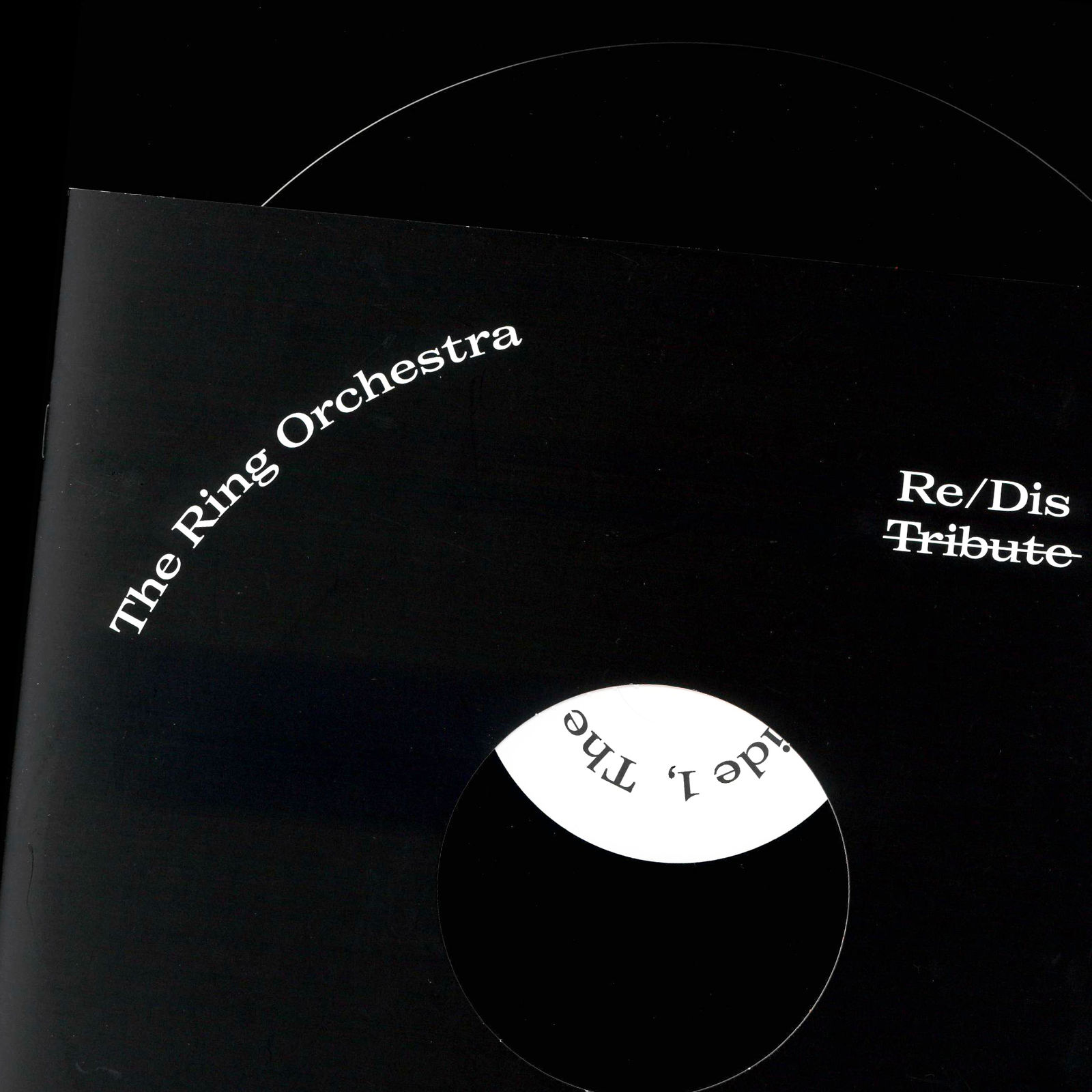
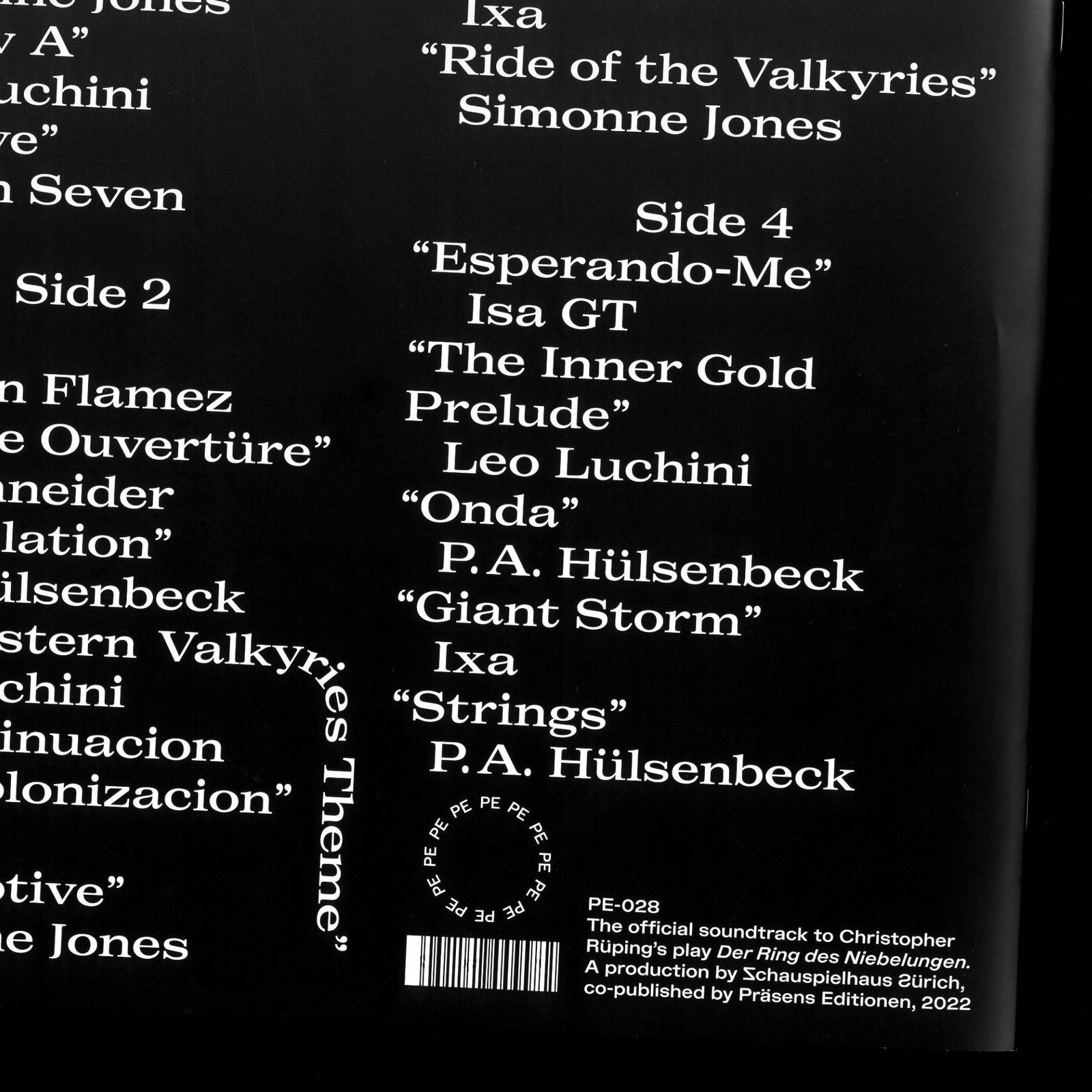
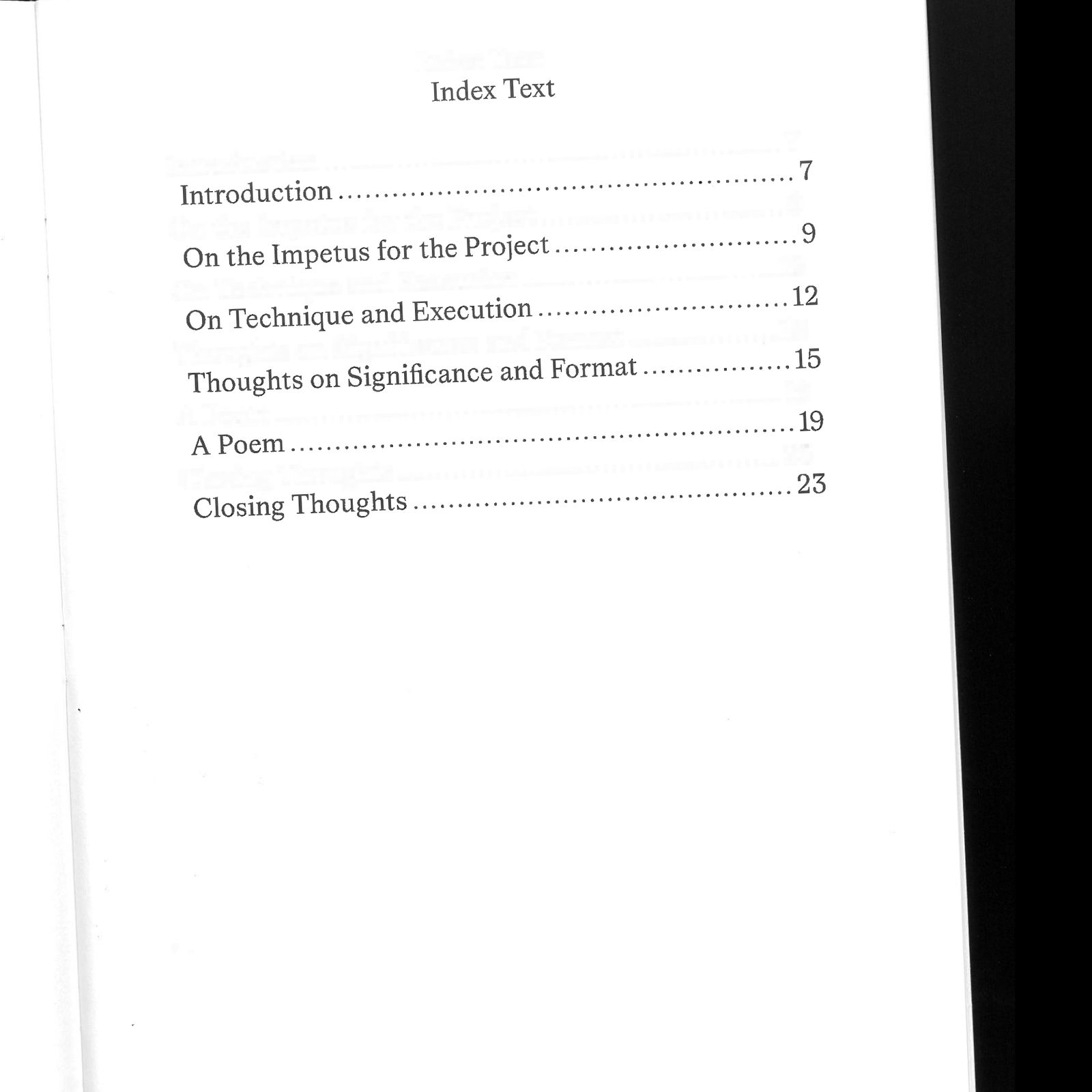
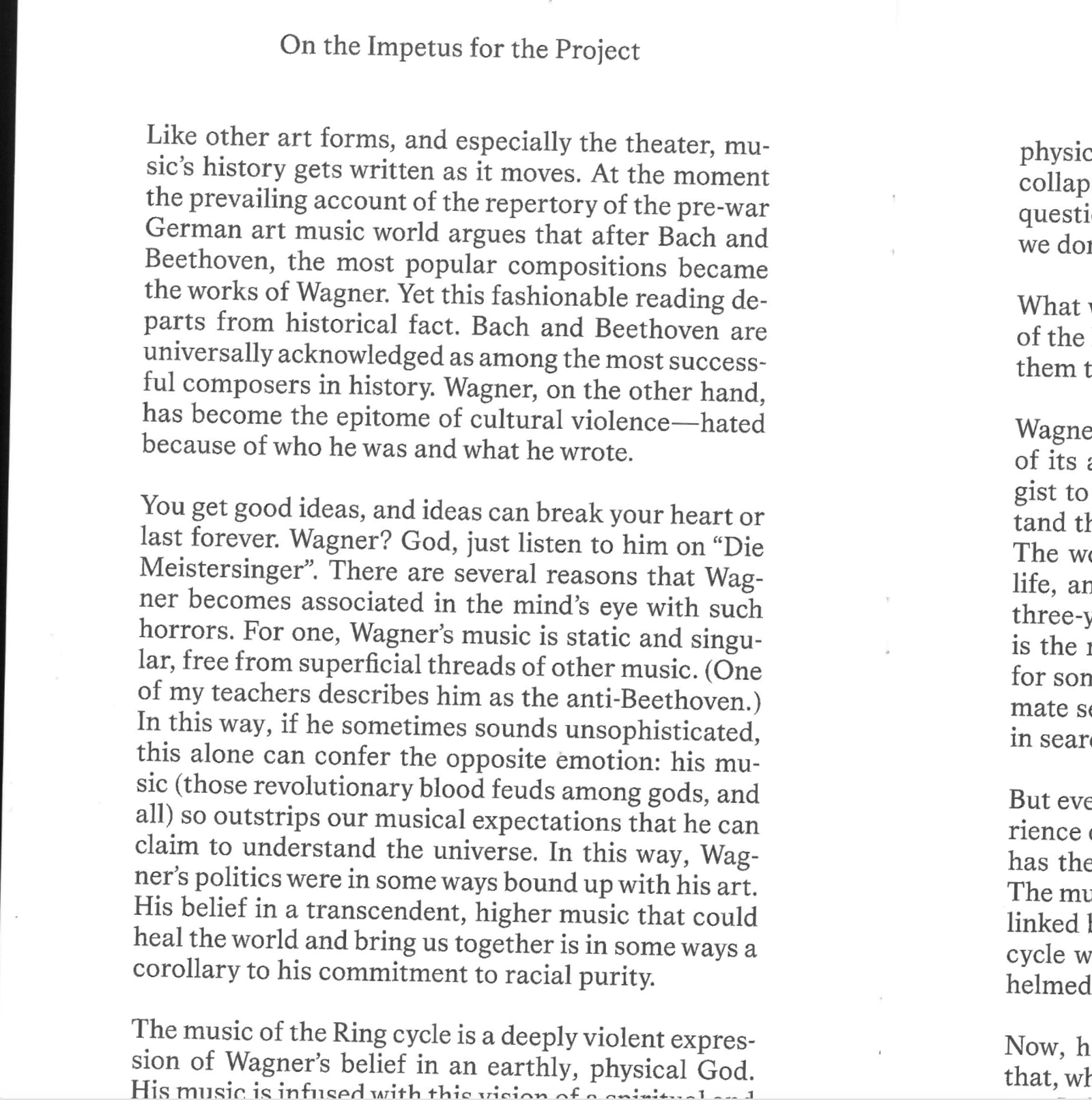
The Ring Orchestra came together to create the music for a staging of Der Ring des Nibelungen at Schauspielhaus Zürich, directed by Christopher Rüping and written bei Necati Öziri. They, meaning everyone involved, ventured out to “correct” Wagner’s monster, full of otherworldly music and deep-seated hatred, full of fervent storms of love and hardcore racism, full of a deep reverence for nature and for Darwin’s blood ideology. The musicians Black Cracker and Jonas Holle assembled an orchestra of independent musicians, countering Wagner’s one-man show with a polyphonic work that became something bigger than the sum of its parts.
